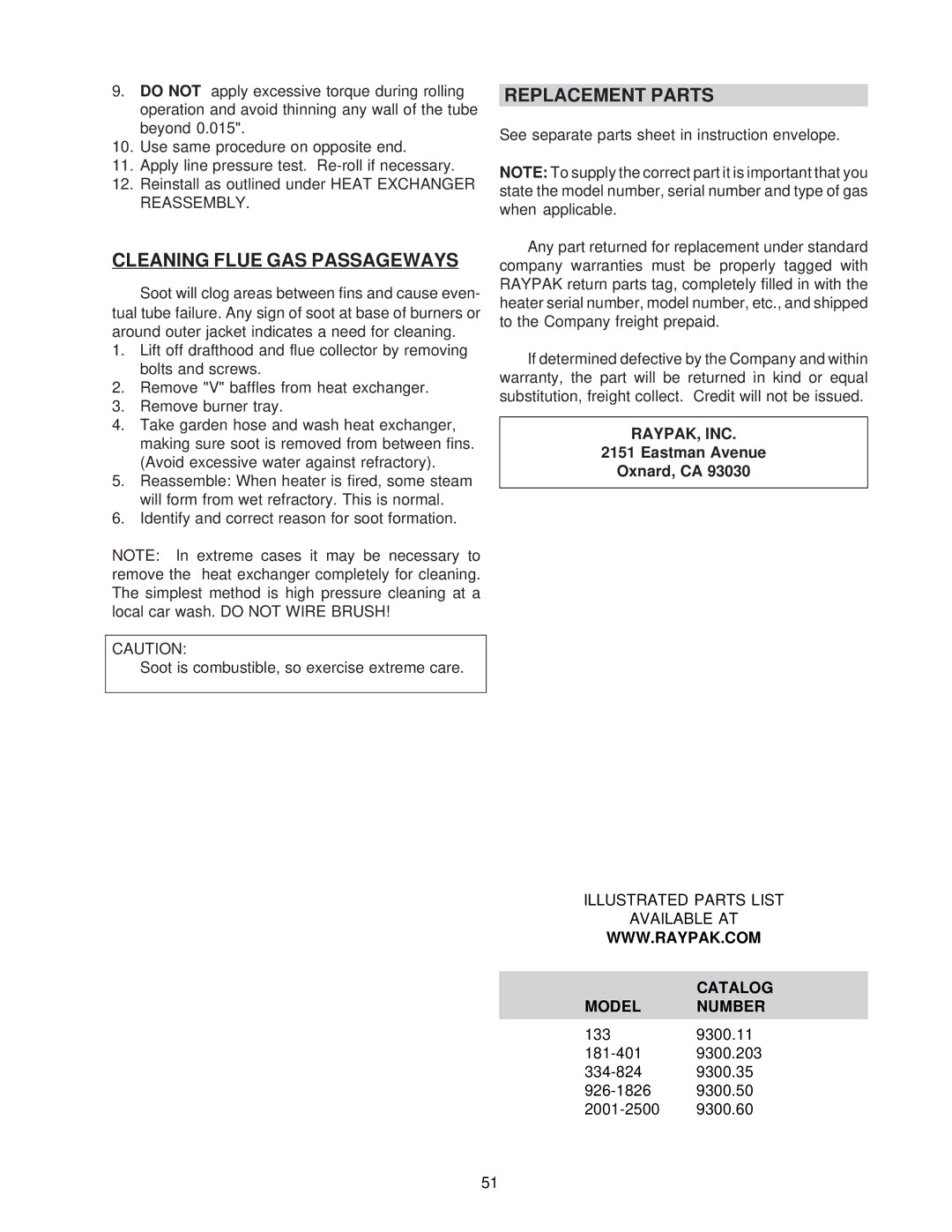
9.DO NOT apply excessive torque during rolling operation and avoid thinning any wall of the tube beyond 0.015".
10.Use same procedure on opposite end.
11.Apply line pressure test.
12.Reinstall as outlined under HEAT EXCHANGER REASSEMBLY.
CLEANING FLUE GAS PASSAGEWAYS
Soot will clog areas between fins and cause even- tual tube failure. Any sign of soot at base of burners or around outer jacket indicates a need for cleaning.
1.Lift off drafthood and flue collector by removing bolts and screws.
2.Remove "V" baffles from heat exchanger.
3.Remove burner tray.
4.Take garden hose and wash heat exchanger, making sure soot is removed from between fins. (Avoid excessive water against refractory).
5.Reassemble: When heater is fired, some steam will form from wet refractory. This is normal.
6.Identify and correct reason for soot formation.
NOTE: In extreme cases it may be necessary to remove the heat exchanger completely for cleaning. The simplest method is high pressure cleaning at a local car wash. DO NOT WIRE BRUSH!
CAUTION:
Soot is combustible, so exercise extreme care.
REPLACEMENT PARTS
See separate parts sheet in instruction envelope.
NOTE: To supply the correct part it is important that you state the model number, serial number and type of gas when applicable.
Any part returned for replacement under standard company warranties must be properly tagged with RAYPAK return parts tag, completely filled in with the heater serial number, model number, etc., and shipped to the Company freight prepaid.
If determined defective by the Company and within warranty, the part will be returned in kind or equal substitution, freight collect. Credit will not be issued.
RAYPAK, INC.
2151 Eastman Avenue
Oxnard, CA 93030
ILLUSTRATED PARTS LIST
AVAILABLE AT
WWW.RAYPAK.COM
CATALOG
MODEL NUMBER
1339300.11
51
